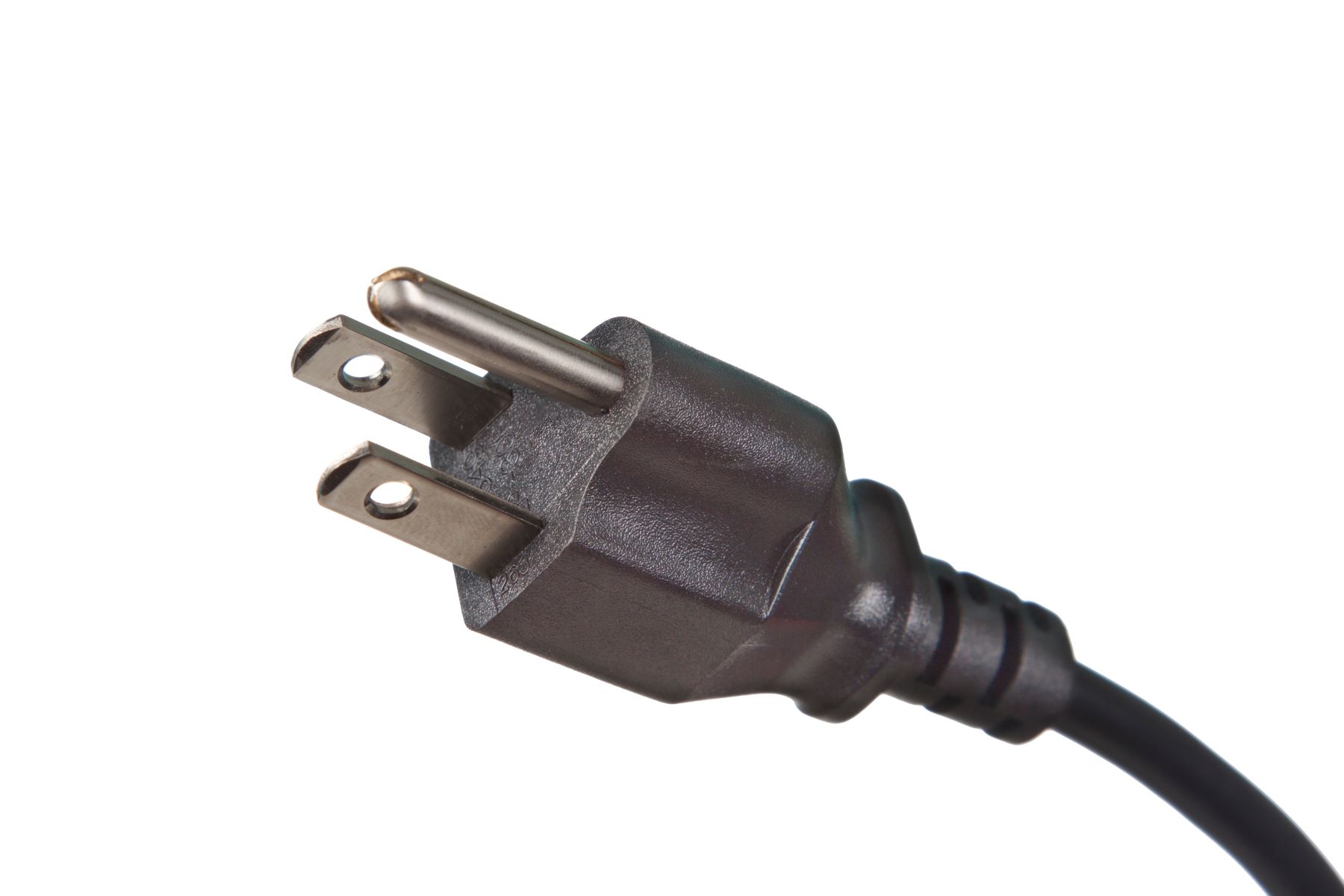Home>Automotive>How To Get A Broken Spark Plug Out


Automotive
How To Get A Broken Spark Plug Out
Published: February 26, 2024
Learn how to safely remove a broken spark plug from your vehicle with our step-by-step guide. Get expert automotive tips and tricks now!
(Many of the links in this article redirect to a specific reviewed product. Your purchase of these products through affiliate links helps to generate commission for Regretless.com, at no extra cost. Learn more)
Table of Contents
Introduction
Dealing with a broken spark plug can be a frustrating and challenging situation for any car owner or mechanic. A broken spark plug can lead to engine misfires, rough idling, and decreased fuel efficiency. However, with the right tools, knowledge, and a methodical approach, removing a broken spark plug can be a manageable task.
In this guide, we will walk you through the step-by-step process of safely and effectively removing a broken spark plug from your vehicle's engine. Whether you are a seasoned DIY enthusiast or a novice mechanic, this comprehensive guide will equip you with the essential information and techniques to tackle this common automotive issue.
By following the instructions outlined in this guide, you will gain the confidence to address a broken spark plug and restore your vehicle's performance. So, gather your tools, roll up your sleeves, and let's dive into the process of removing a broken spark plug with precision and ease.
Read more: How To Get Vaseline Out Of Clothes
Tools and materials needed
When it comes to removing a broken spark plug, having the right tools and materials at your disposal is crucial for a successful and safe extraction process. Here's a comprehensive list of the essential items you'll need to effectively tackle this task:
1. Socket Wrench Set:
A quality socket wrench set with a variety of socket sizes is indispensable for removing the ignition coil and accessing the broken spark plug. Ensure that the set includes both standard and deep sockets to accommodate different spark plug depths.
2. Spark Plug Socket:
A specialized spark plug socket with a rubber insert or magnetic feature is designed to securely grip the spark plug during removal, preventing the risk of dropping it into the engine cylinder.
3. Extension Bars:
Long and short extension bars are essential for reaching the spark plug located deep within the engine's cylinder head. These extension bars provide the necessary reach and flexibility to access the spark plug effectively.
Read more: How To Get Eyelash Out Of Eye
4. Ratchet:
A reliable ratchet with a comfortable grip will allow you to apply controlled torque when loosening and tightening the spark plug and other components during the removal and installation process.
5. Needle-Nose Pliers:
Needle-nose pliers are handy for carefully extracting any remaining pieces of the broken spark plug or debris from the spark plug well. Their slim and elongated jaws enable precise maneuvering in tight spaces.
6. Thread Chaser or Tap:
In cases where the spark plug threads are damaged, a thread chaser or tap can be used to clean and restore the threads within the cylinder head, ensuring a proper fit for the new spark plug.
7. Penetrating Oil:
A high-quality penetrating oil, such as WD-40 or PB Blaster, can aid in loosening the seized or corroded threads of the broken spark plug, facilitating its removal without causing damage to the cylinder head.
Read more: How To Get Cigarette Smell Out Of Car
8. Shop Vacuum:
A shop vacuum or compressed air can be utilized to remove any debris or foreign particles that may have fallen into the spark plug well during the extraction process, maintaining a clean and debris-free work area.
9. New Spark Plug:
It's essential to have a replacement spark plug on hand that matches the specifications recommended by the vehicle manufacturer. Ensure that the new spark plug is compatible with your vehicle's make, model, and engine type.
10. Safety Gear:
Lastly, don't forget to prioritize safety by wearing protective gloves and safety glasses throughout the removal process to shield yourself from potential debris and chemical exposure.
By assembling these essential tools and materials, you'll be well-prepared to embark on the task of removing a broken spark plug with confidence and precision.
Step 1: Prepare the area
Before diving into the intricate process of removing a broken spark plug, it's crucial to prepare the work area to ensure a smooth and safe extraction process. Proper preparation not only facilitates easier access to the spark plug but also minimizes the risk of debris or contaminants entering the engine cylinder. Here's a detailed breakdown of the essential steps to prepare the area for spark plug removal:
-
Park the Vehicle: Begin by parking the vehicle on a level surface and engaging the parking brake to prevent any unintended movement. Additionally, ensure that the engine is turned off and has cooled down to avoid potential burns or injuries during the removal process.
-
Open the Hood: Pop the hood of the vehicle and secure it with the prop rod to provide unobstructed access to the engine compartment. Adequate lighting in the work area is essential for clear visibility, so consider using a portable work light if necessary.
-
Locate the Broken Spark Plug: Identify the specific cylinder containing the broken spark plug by referring to the vehicle's service manual or utilizing a cylinder identification diagram. This step is crucial for targeting the correct spark plug and avoiding unnecessary disassembly of unrelated components.
-
Clean the Surrounding Area: Use a soft-bristled brush or compressed air to carefully remove any dirt, debris, or loose particles from the area surrounding the spark plug well. Keeping the area clean minimizes the risk of contaminants falling into the cylinder upon spark plug removal.
-
Apply Penetrating Oil: If the broken spark plug is seized or corroded, applying a liberal amount of penetrating oil to the exposed threads can help loosen the spark plug and facilitate its removal. Allow the penetrating oil to penetrate the threads for several minutes to maximize its effectiveness.
-
Gather Essential Tools: Ensure that all the necessary tools and materials, including the socket wrench set, spark plug socket, extension bars, and safety gear, are within reach. Organizing the tools beforehand saves time and minimizes disruptions during the removal process.
By meticulously preparing the work area and following these preliminary steps, you'll set the stage for a successful and efficient broken spark plug removal process. This proactive approach not only streamlines the extraction procedure but also contributes to a safer and more controlled working environment.
Read more: How To Get Heat Stains Out Of Wood
Step 2: Remove the ignition coil
With the work area prepared and the broken spark plug identified, the next critical step in the removal process involves accessing the spark plug by removing the ignition coil. The ignition coil is responsible for generating the high-voltage electrical pulse needed to ignite the air-fuel mixture within the engine cylinders. Here's a detailed breakdown of the methodical process to remove the ignition coil:
-
Locate the Ignition Coil: Depending on the vehicle's engine configuration, the ignition coil may be situated directly on top of the spark plug or in close proximity within the engine compartment. Refer to the vehicle's service manual or consult online resources to pinpoint the exact location of the ignition coil for the specific cylinder containing the broken spark plug.
-
Disconnect Electrical Connections: Before proceeding with the removal, carefully disconnect the electrical connections leading to the ignition coil. This typically involves detaching the wiring harness connector and any associated electrical components that may be secured to the ignition coil. Exercise caution and ensure that the engine is turned off to prevent electrical shock or damage to the vehicle's electrical system.
-
Remove Mounting Bolts or Screws: Using an appropriate socket wrench and socket size, carefully loosen and remove the mounting bolts or screws securing the ignition coil in place. Depending on the vehicle model, the ignition coil may be fastened with one or multiple bolts, so take note of the exact number and location of the fasteners to facilitate a smooth removal process.
-
Gently Extract the Ignition Coil: Once the mounting bolts or screws are removed, gently lift the ignition coil from its position, taking care not to damage the electrical connectors or surrounding components. In some cases, the ignition coil may be secured with rubber boots or retainers, so exercise patience and precision when detaching the coil from the spark plug well.
-
Inspect the Ignition Coil: With the ignition coil removed, take a moment to inspect its condition for any signs of damage, corrosion, or wear. Look for indications of arcing, insulation breakdown, or physical defects that may warrant replacement. If any issues are detected, consider replacing the ignition coil to ensure optimal engine performance and reliability.
By methodically following these steps, you can successfully remove the ignition coil, gaining unobstructed access to the broken spark plug within the engine cylinder. This preparatory phase sets the stage for the subsequent task of extracting the broken spark plug with precision and care.
Step 3: Remove the broken spark plug
With the ignition coil successfully removed, the focus now shifts to the meticulous process of extracting the broken spark plug from the engine cylinder. This step requires patience, precision, and the strategic use of specialized tools to ensure the safe and effective removal of the broken spark plug. Here's a detailed breakdown of the methodical approach to remove the broken spark plug:
-
Inspect the Spark Plug Well: Before proceeding with the extraction, visually inspect the spark plug well to assess the condition of the broken spark plug and identify any potential obstructions or debris. Use a flashlight to illuminate the area and carefully examine the surroundings to ensure a clear and unobstructed path for the extraction process.
-
Select the Correct Socket Size: Choose the appropriate spark plug socket size from your socket wrench set that matches the dimensions of the broken spark plug. It's essential to use a socket that provides a snug and secure fit to prevent slippage and ensure proper engagement with the spark plug during removal.
-
Secure the Spark Plug Socket: Insert the spark plug socket onto the extension bar of the socket wrench, ensuring a secure attachment. The use of a socket with a rubber insert or magnetic feature can further enhance the grip on the broken spark plug, minimizing the risk of it becoming dislodged during extraction.
-
Position the Socket Over the Spark Plug: Carefully guide the spark plug socket into the spark plug well, aligning it with the broken spark plug. Apply gentle downward pressure to seat the socket firmly onto the spark plug, ensuring a stable connection before initiating the loosening process.
-
Loosen the Broken Spark Plug: With the spark plug socket securely in place, use the ratchet to apply gradual and controlled counterclockwise torque to loosen the broken spark plug. Exercise caution to avoid excessive force, as this can exacerbate the breakage or cause damage to the surrounding components.
-
Extract the Broken Spark Plug: Once the broken spark plug is sufficiently loosened, carefully continue rotating the ratchet to unthread the spark plug from the cylinder head. Maintain steady pressure and be mindful of any resistance or unusual sensations, as these may indicate remaining debris or damaged threads within the spark plug well.
-
Inspect the Cylinder Head Threads: After successfully removing the broken spark plug, visually inspect the threads within the cylinder head to ensure they are intact and free from damage. Any signs of thread deformation or contamination should be addressed promptly to facilitate a secure fit for the new spark plug.
By methodically following these steps and exercising precision throughout the extraction process, you can safely remove the broken spark plug from the engine cylinder, paving the way for the subsequent cleaning and installation of the new spark plug. This meticulous approach minimizes the risk of causing further damage and ensures a seamless transition to the final phases of the spark plug replacement procedure.
Step 4: Clean the area
After successfully removing the broken spark plug, the next crucial step in the spark plug replacement process involves thoroughly cleaning the surrounding area and the spark plug well within the engine cylinder. This meticulous cleaning phase is essential for eliminating any residual debris, contaminants, or foreign particles that may have accumulated during the extraction process. Additionally, a clean and debris-free environment is vital for ensuring a secure and proper fit for the new spark plug. Here's a detailed breakdown of the comprehensive cleaning process:
-
Inspect the Spark Plug Well: Begin by visually inspecting the spark plug well to assess its cleanliness and identify any remaining debris or contaminants. Utilize a portable work light or flashlight to illuminate the area and carefully examine the interior of the spark plug well for any signs of dirt, grime, or foreign objects.
-
Use Compressed Air or Shop Vacuum: Employ a shop vacuum or compressed air to thoroughly clean the spark plug well and surrounding area. Gently blow out any loose particles, dirt, or debris that may have accumulated within the well, ensuring that the interior is free from obstructions and contaminants.
-
Carefully Remove Residual Debris: If any stubborn debris or foreign particles persist within the spark plug well, utilize a soft-bristled brush or a specialized spark plug well cleaning tool to carefully dislodge and remove the remaining contaminants. Exercise caution to avoid damaging the cylinder head or introducing additional debris into the well.
-
Inspect the Cylinder Head Surface: Take a moment to inspect the surface of the cylinder head surrounding the spark plug well. Ensure that the area is clean and free from any residual debris or contaminants that could interfere with the installation of the new spark plug.
-
Verify Thread Integrity: Verify the integrity of the threads within the spark plug well and the cylinder head. Ensure that the threads are undamaged and free from any foreign material that could impede the proper seating of the new spark plug.
-
Apply Anti-Seize Compound (Optional): Consider applying a thin layer of anti-seize compound to the threads of the new spark plug before installation. This can help prevent future seizing or corrosion, making future spark plug removal easier.
By meticulously cleaning the area and the spark plug well, you'll create an optimal environment for the seamless installation of the new spark plug. This thorough cleaning process ensures that the engine cylinder is free from debris and contaminants, setting the stage for the final step of installing the new spark plug with precision and confidence.
Step 5: Install the new spark plug
With the area meticulously prepared and the broken spark plug successfully removed, the final and pivotal step in the spark plug replacement process is the precise installation of the new spark plug. This critical phase demands attention to detail, proper technique, and adherence to manufacturer specifications to ensure optimal engine performance and longevity. Here's a comprehensive guide to the methodical installation of the new spark plug:
-
Prepare the New Spark Plug: Prior to installation, carefully inspect the new spark plug to verify its integrity and compatibility with the vehicle's engine. Ensure that the spark plug's electrode gap matches the manufacturer's specifications, and confirm that the threads are clean and free from any defects or damage.
-
Apply Anti-Seize Compound (If Applicable): If recommended by the vehicle manufacturer, apply a thin, uniform coating of anti-seize compound to the threads of the new spark plug. This compound helps prevent thread seizing and corrosion, facilitating future removal and replacement of the spark plug.
-
Hand Thread the Spark Plug: Begin the installation process by hand-threading the new spark plug into the cylinder head. Carefully align the spark plug with the threads within the spark plug well and initiate the threading process by turning the spark plug in a clockwise direction. Exercise caution to avoid cross-threading, ensuring that the spark plug engages the threads smoothly and uniformly.
-
Tighten the Spark Plug: Once the spark plug is hand-threaded, utilize a torque wrench and the appropriate spark plug socket to tighten the spark plug to the manufacturer's specified torque value. Refer to the vehicle's service manual or the spark plug manufacturer's guidelines to determine the precise torque setting for the specific spark plug and engine configuration. Applying the correct torque is crucial for establishing a secure and reliable seal without damaging the threads or the spark plug.
-
Reconnect the Ignition Coil: With the new spark plug securely installed, proceed to reattach the ignition coil to the spark plug well. Carefully position the ignition coil over the spark plug and ensure that it seats properly. Reinstall any mounting bolts or screws, and reconnect the electrical connections to the ignition coil, securing them in place to complete the reassembly process.
-
Double-Check the Installation: Conduct a final visual inspection to verify that the new spark plug is securely seated and properly torqued. Ensure that all components, including the ignition coil and associated electrical connections, are reinstalled and secured according to the manufacturer's specifications.
By meticulously following these steps and adhering to the recommended procedures, you can confidently install the new spark plug, setting the stage for improved engine performance, fuel efficiency, and overall reliability. This methodical approach ensures that the new spark plug is seamlessly integrated into the engine cylinder, contributing to the smooth operation and longevity of your vehicle's powerplant.
Conclusion
In conclusion, the process of removing a broken spark plug from a vehicle's engine is a task that demands precision, patience, and the right set of tools. By following the step-by-step guide outlined in this comprehensive article, you can effectively navigate the challenges associated with a broken spark plug and restore your vehicle's performance with confidence.
From the initial preparation of the work area to the meticulous extraction of the broken spark plug and the precise installation of the new spark plug, each phase of the process plays a crucial role in ensuring a successful outcome. The careful inspection of the spark plug well, the strategic use of specialized tools, and the thorough cleaning of the surrounding area are essential elements that contribute to a seamless and reliable spark plug replacement.
Furthermore, the emphasis on safety measures, including the use of protective gear and the avoidance of excessive force during the removal process, underscores the importance of prioritizing personal safety and preventing potential damage to the vehicle's components.
By adhering to manufacturer specifications, torque values, and recommended procedures, you can safeguard against potential issues such as cross-threading, over-tightening, or improper seating of the new spark plug. This attention to detail ensures that the new spark plug integrates seamlessly into the engine cylinder, promoting optimal combustion and engine efficiency.
Ultimately, the successful removal and replacement of a broken spark plug not only contribute to the smooth operation of the vehicle but also serve as a testament to your ability to tackle automotive challenges with skill and precision. Whether you are a seasoned DIY enthusiast or a novice mechanic, mastering the art of spark plug replacement empowers you to maintain and enhance the performance of your vehicle with confidence.
In essence, by following the guidelines presented in this article, you are equipped to address the issue of a broken spark plug with a methodical approach, ensuring that your vehicle's engine operates at its best. So, roll up your sleeves, gather your tools, and embark on the journey of spark plug replacement, knowing that you have the knowledge and expertise to conquer this common automotive challenge.











